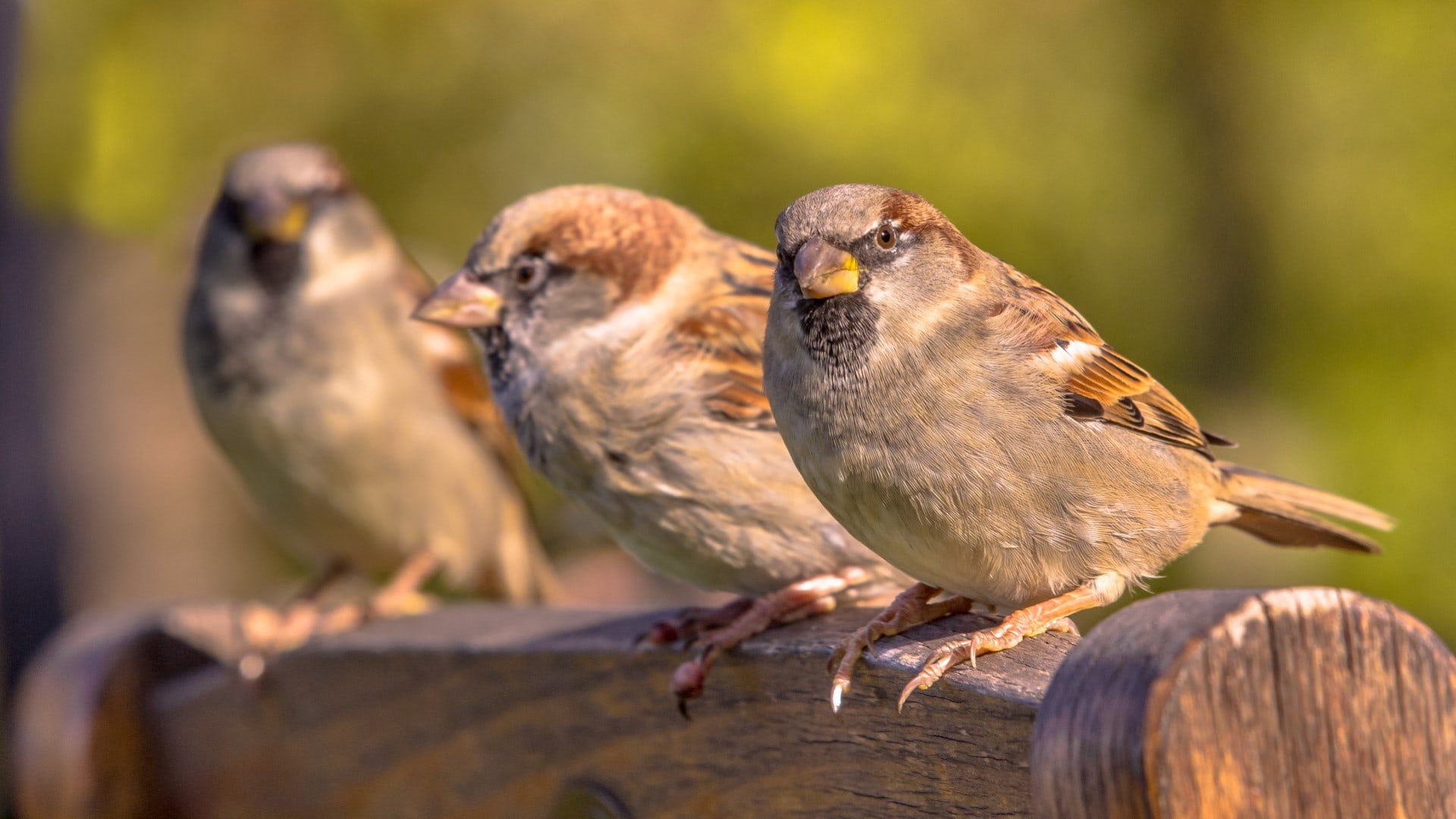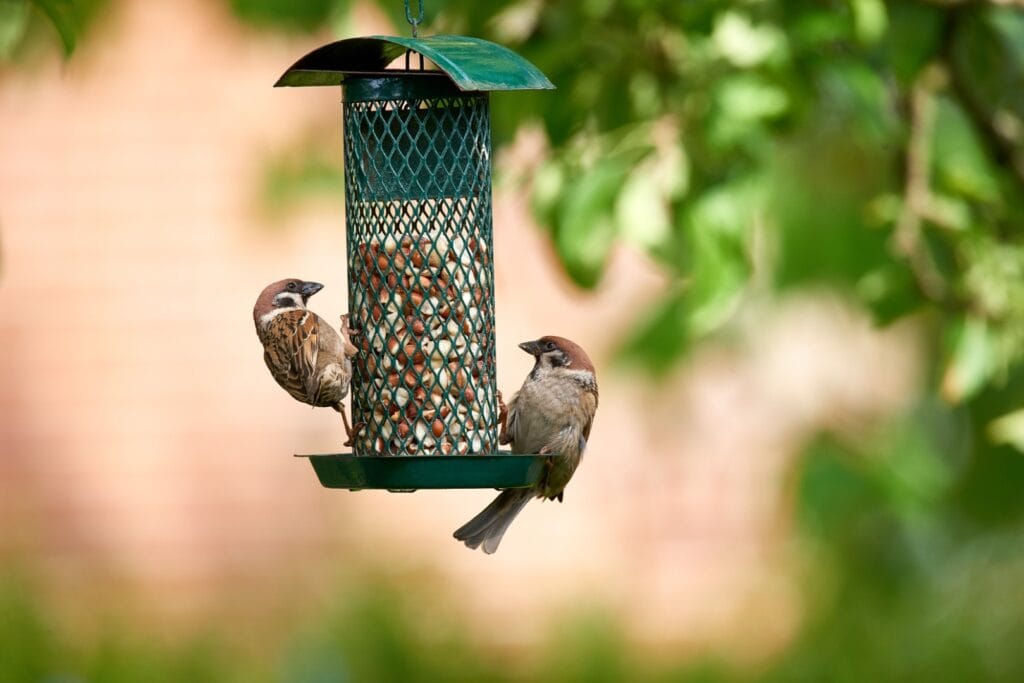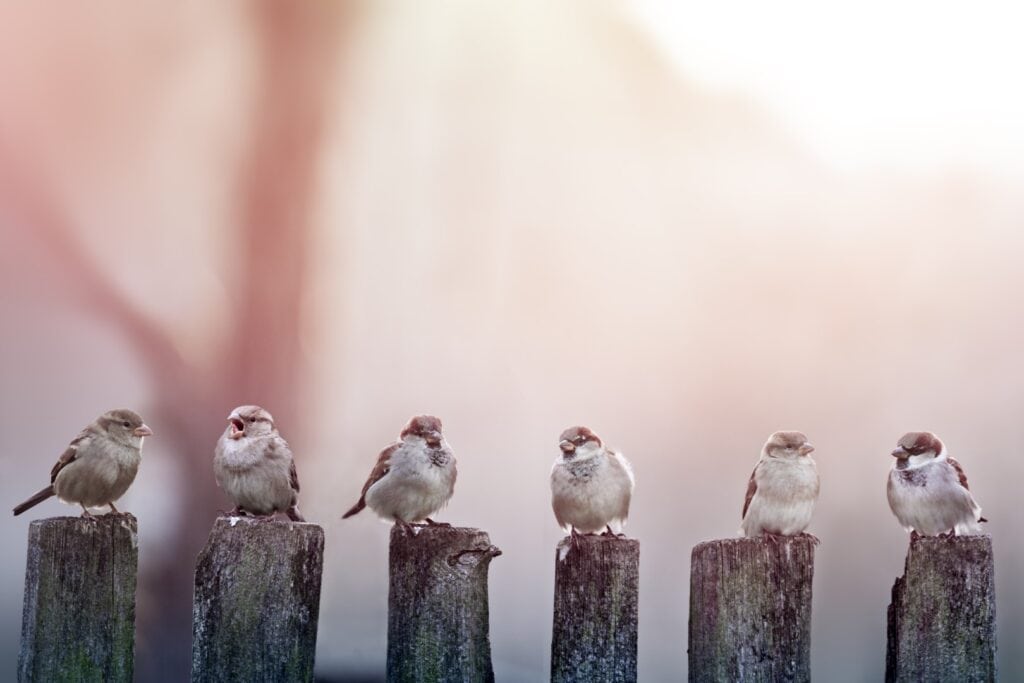Discover the Sparrow
Sparrows are one of the most familiar and widespread birds across the globe. Known for their adaptability to various environments, these small, plucky birds have a close association with human settlements. This page will explore the world of sparrows, from their identification and habitat to their behavior and conservation status.
Identification of the Sparrow
Physical Description
Sparrows are small birds, typically measuring 12 to 18 cm in length and weighing 15 to 40 grams. They are characterized by their stout bodies, rounded wings, and strong beaks designed for seed-eating. The most common species, the House Sparrow, has a grey crown, cheeks, and underparts, with black around the eyes and throat, and rufous neck and upper parts.
Differences Between the Sexes
In many sparrow species, males and females have distinct plumage. Male House Sparrows, for example, have brighter markings and more pronounced black bibs than females, which are generally duller and have no black bib.
Plumage and Seasonal Changes
Sparrow plumage does not change drastically with the seasons, but juveniles may have more muted tones than adults until they reach maturity.
Habitat and Distribution
Sparrows can be found in a wide range of habitats, from natural grasslands to urban areas. The House Sparrow, in particular, is closely associated with human habitation and can be found in almost every part of the world, having been introduced to many regions outside its native range in Europe and Asia.


Behavior and Lifestyle
Feeding
Sparrows primarily eat seeds and grains, but they can also consume insects, especially during the breeding season when they require more protein in their diet.
Social Behavior
Sparrows are highly social birds, often seen in flocks during the non-breeding season. They communicate with a variety of chirps and calls and engage in social activities such as dust or water bathing and communal feeding.
Migration
Most sparrow species are sedentary or partially migratory, depending on the availability of food and habitat conditions.
Reproduction
Sparrows typically breed once or twice a year, building nests in crevices of buildings, trees, or bushes. A typical clutch contains 3-5 eggs, and both parents share responsibilities for incubation and feeding the young.
Conservation and Status
While many sparrow species are abundant, certain populations, especially in urban areas, have experienced significant declines due to habitat loss, pollution, and competition for nesting sites. Conservation efforts focus on habitat preservation and providing resources such as nesting boxes and feeders.


FAQ on the Sparrow
Why are sparrows so common in urban areas?
Sparrows thrive in urban areas due to the abundance of food sources, like crumbs and food waste, and nesting opportunities in buildings and other structures. Their adaptability to various environments and generalist diet have made them one of the most successful urban bird species.
How can I differentiate between sparrow species?
Differentiating between sparrow species involves observing their plumage patterns, size, and listening to their songs and calls. For example, the House Sparrow has a distinctive black bib and grey cap, while the Song Sparrow features a streaked breast and a long, rounded tail.
How can I attract sparrows to my yard?
To attract sparrows, provide a variety of seed types in feeders, ensure access to clean water, and create sheltering opportunities with dense shrubs or birdhouses. Avoiding pesticides and creating a bird-friendly garden with native plants can also encourage sparrows to visit and stay in your yard.
Are sparrows endangered?
While the House Sparrow is not currently considered endangered and is, in fact, one of the most widespread and abundant bird species globally, some sparrow species have experienced significant population declines. Habitat loss, pollution, and competition for nesting sites have impacted certain sparrow populations.
What do sparrows eat besides seeds?
Besides seeds, sparrows also eat insects, especially during the breeding season when they require more protein to feed their young. Their diet can include beetles, caterpillars, and aphids. In urban areas, they may also consume food scraps provided by humans.
Can sparrows cause harm to other bird species?
In some cases, sparrows, particularly the House Sparrow, can compete aggressively with native bird species for food and nesting sites, potentially displacing them. However, with proper management and conservation efforts, the impact on native bird populations can be minimized.
How do sparrows communicate?
Sparrows communicate through a variety of chirps, calls, and songs. These vocalizations can indicate alarm, signal the presence of food, or play a role in mating rituals. Body language, such as wing fluttering and posture, also plays a crucial role in their communication.
Do sparrows migrate?
While many sparrow species are resident birds, meaning they stay in the same area year-round, some do migrate seasonally depending on the availability of food and suitable habitat. Migration patterns can vary widely among different sparrow species.
How can I differentiate between sparrow species?
Sparrow species can be differentiated by their size, plumage patterns, and songs. Familiarizing yourself with these characteristics can help in identification.
How can I attract sparrows to my yard?
Providing food such as mixed seeds and grains, ensuring clean water sources, and installing birdhouses can attract sparrows to your yard.
How to Help Sparrows
Supporting sparrow populations involves creating bird-friendly environments by planting native vegetation, providing food and water sources, and avoiding the use of pesticides and chemicals that can harm them.
The Risks Associated with the Sparrow
The house sparrow is a species that doesn’t migrate. That’s why, during the winter, it’s not uncommon to see sparrows inside warehouses, businesses, and other places where they can find heat and food. Bird Solution provides you with effective and durable products to get rid of the invasive birds that have taken shelter in or around your building. Our team of experts will help you find the most suitable bird control method for the structure of your building.

